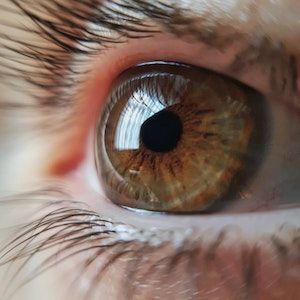Patients with Lowest Fluctuation in Retinal Thickening with Ranibizumab Found to Have Greatest Vision Gains
New research suggests lower central foveal thickness fluctuation scores with patients on ranibizumab were associated with the greatest gains in vision.

A recent post-hoc analysis of the of the HARBOR trial found that neovascular age-related macular degeneration (nAMD) patients with the lowest fluctuation scores in retinal thickening saw the highest vision gains after using ranibizumab.
The study’s investigators sought out to examine the correlations between variability in central foveal thickness (CFT) and vision with ranibizumab, in a post-hoc analysis. The study was led by Veeral Sheth, from the University Retina and Macula Associates in Lemont, Illinois.
“Our findings suggest that fluctuations in retinal thickness, defined as a change of ≥50 μm after the loading period, may be associated with treatment response, but that patients with the greatest fluctuation scores may still be able to attain vision gains, although less than those among patients with the lowest fluctuation scores,” Sheth and colleagues wrote.
Background
The post-hoc analysis was done on the HARBOR trial, which was a multicenter, randomized, double-masked, active treatment-controlled trial.
The investigators examined patients with nAMD, with the patients receiving monthly or as-needed (PRN) ranibizumab (0.5 or 2.0 mg) for a total of 24 months. They used retinal-thickening fluctuation scores to determine variability of CFT, with numeric value of CFT changes being added to scores each time an increase or decrease occurred.
The research team considered a <50 μm magnitude of change to be clinically insignificant and, therefore, did not count it toward patients’ CFT scores. These scores were later gathered into quartiles, with least squares mean (LSM) changes for best-corrected visual acuity (BCVA) being plotted against several measures such as fluctuation score quartiles for subretinal fluid (SRF), fluctuation scores for CFT.
Findings
The study’s findings indicated that nAMD patients with low CRT fluctuation scores, in the first through third quartiles, saw the best gains in vision by 24 months. LSM changes from baseline in the PRN and monthly study groups were 8.7-10.6 and 9.0-10.8 letters, respectively, and quartile 4 changes were 6.7 and 6.5 letters, respectively.
The investigators did not find any differences between quartiles for association between fluctuations in gains for best-corrected visual acuity and SRF height.
“Patients receiving fixed monthly treatment fluctuate less than those receiving pro re nata treatment, which is associated with a trend towards worse vision gains among patients experiencing the highest fluctuations,” they wrote.
The study, “Fluctuations in central foveal thickness and association with vision outcomes with anti-VEGF therapy for nAMD: HARBOR post hoc analysis,” was published online with BMJ Open Ophthalmology.